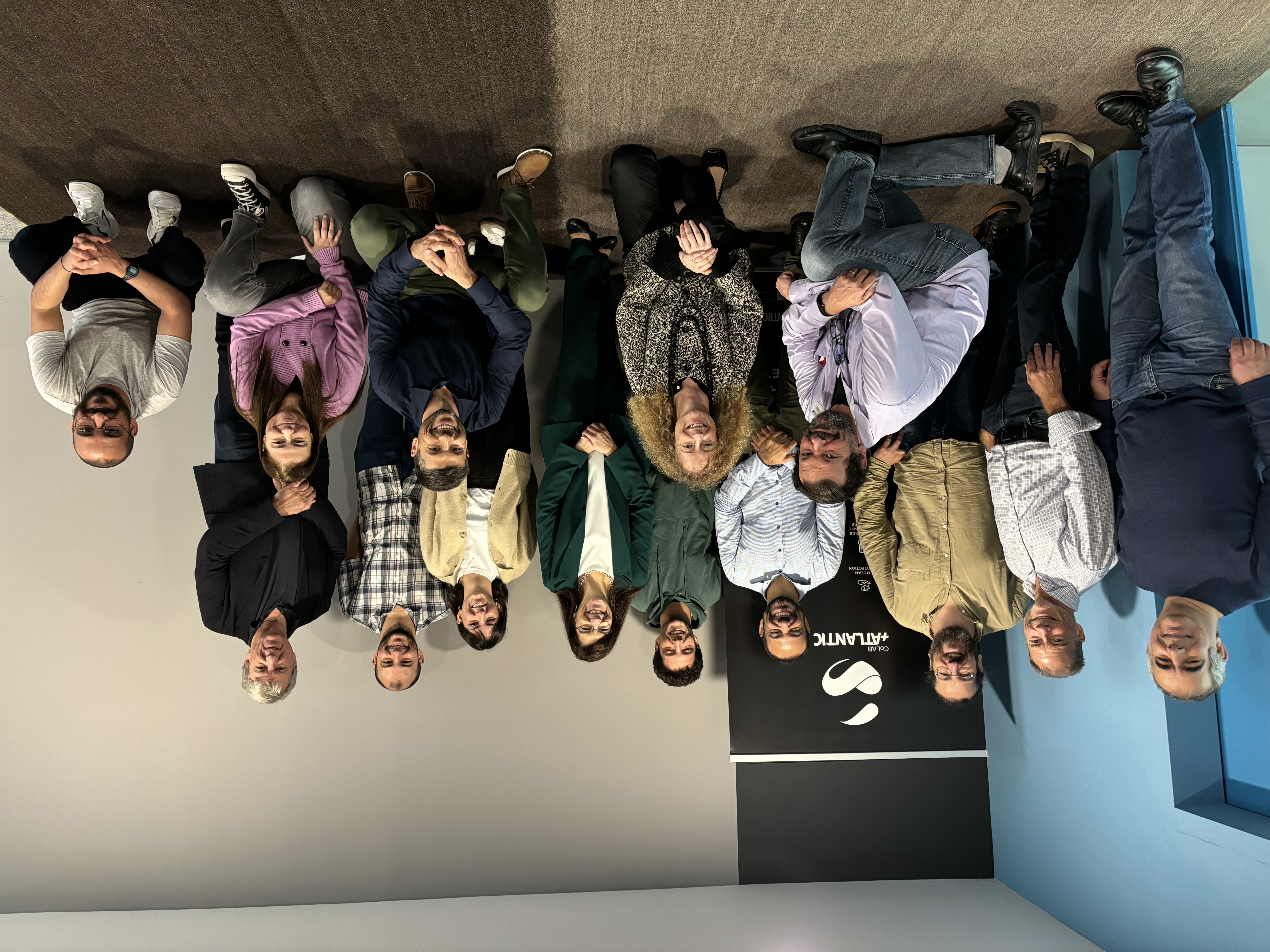
Participants at the invitation-only meeting on data close to river mouths organised by multiple EMODnet in Lisbon on 8 November. (©EMODnet Chemistry)
On 8 November, EMODnet Chemistry, Physics, Bathymetry and Ingestion organised a meeting in Lisbon together with +ATLANTIC CoLAB. The aim was to sensitise local authorities to the ever-increasing demand for water physics and water quality data and to establish the flow of additional data supported by EMODnet. The location of the meeting was not trivial: Portugal is currently the EMODnet champion in the provision of river outflow data to EMODnet Physics, as we will explain below.
The invitation-only meeting was hosted by the Museu das Comunicações and was attended by 12 participants, including the Portuguese Environment Agency (APA in Portuguese).
The meeting highlighted the role of the APA in facilitating near real-time access to river outflow data since the launch of the EMODnet Physics river node in 2016. Free access to the data enabled this initiative, which currently involves almost 40 data providers from 22 countries with more than 1000 stations. The data is aggregated by +ATLANTIC CoLAB and distributed via EMODnet Physics.
During the meeting, EMODnet activities in Physics, Chemistry, Bathymetry and Ingestion were illustrated. The EMODnet presentations are available at these links:
General presentation
Role played by the Instituto Hidrográfico (IH) in EMODnet
From Physics to Chemistry The European marine data service
The role of the Hydrographic Institute as a consolidated EMODnet data provider and the efforts to establish the Portuguese National Oceanographic Data Centre were highlighted by Carlos Borges in his presentation. In this context, EMODnet emphasised that national and local bodies responsible for collecting data should consider the EMODnet National Data Centres as important elements in the data distribution work chain. This is the case with the NODC-PT, which is an important ally for the APA in consolidating national marine data management and ensuring the accessibility and interoperability of data with European marine data infrastructures.
“The network of data centres involved in EMODnet Chemistry collects data on marine chemistry, both from environmental monitoring and scientific research. Data collection is done in direct communication with the originators of the data to ensure the best measurement datasets and associated metadata and to avoid duplicates.” Alessandra Giorgetti of OGS, coordinator of EMODnet Chemistry
Finally, the actions required for the Portuguese EMODnet river node to include other biogeochemical properties were discussed. It was agreed that the next steps would be to involve the Portuguese Environment Agency as a key stakeholder and as the first case study for future service developments.
“The APA was the first institution to join and support the development of the EMODnet Physics river outflow operational product. Thanks to its example, in approximately seven years, we have been able to connect more than 1,200 river stations. Having this data available is opening new opportunities and reaching new communities, which are now asking for more. Specifically, there is a growing demand to provide information on both water physics and water quality. APA is already running programmatic monitoring in their waters, so they can once again be our champion and demonstrate to the community how it can be done effectively”. Antonio Novellino of ETT, coordinator of EMODnet Physics
